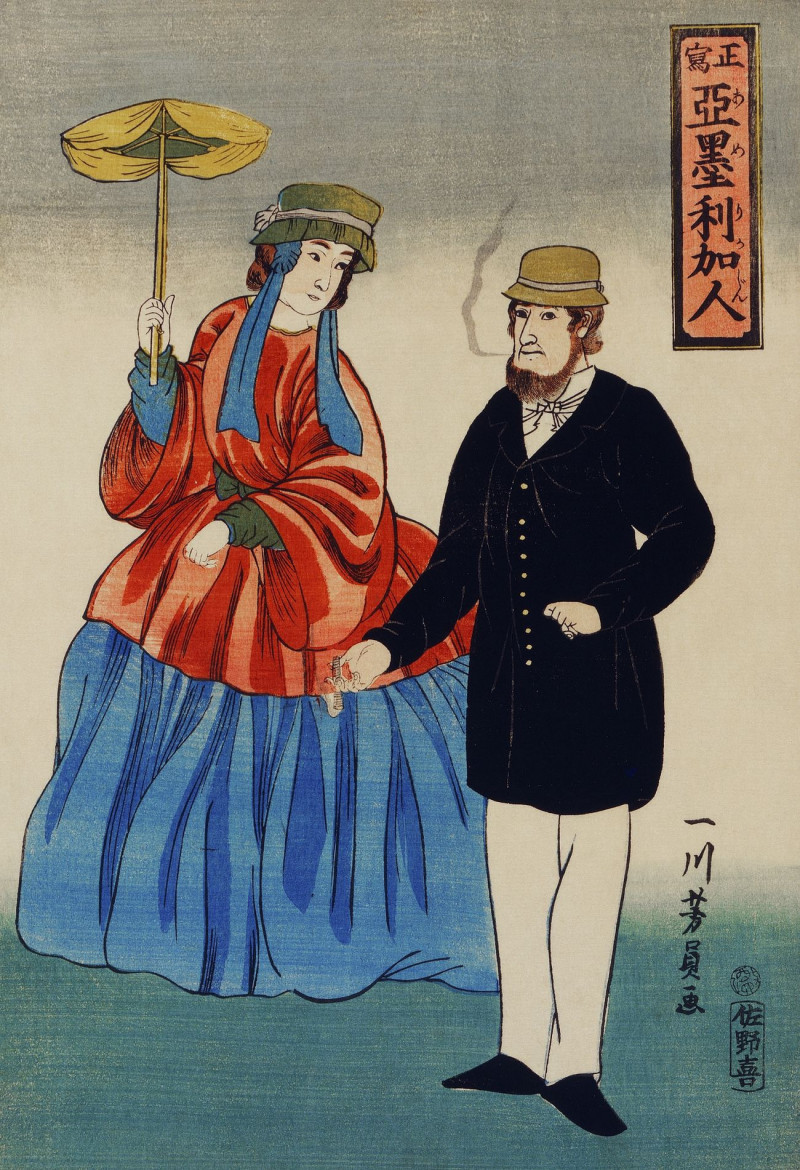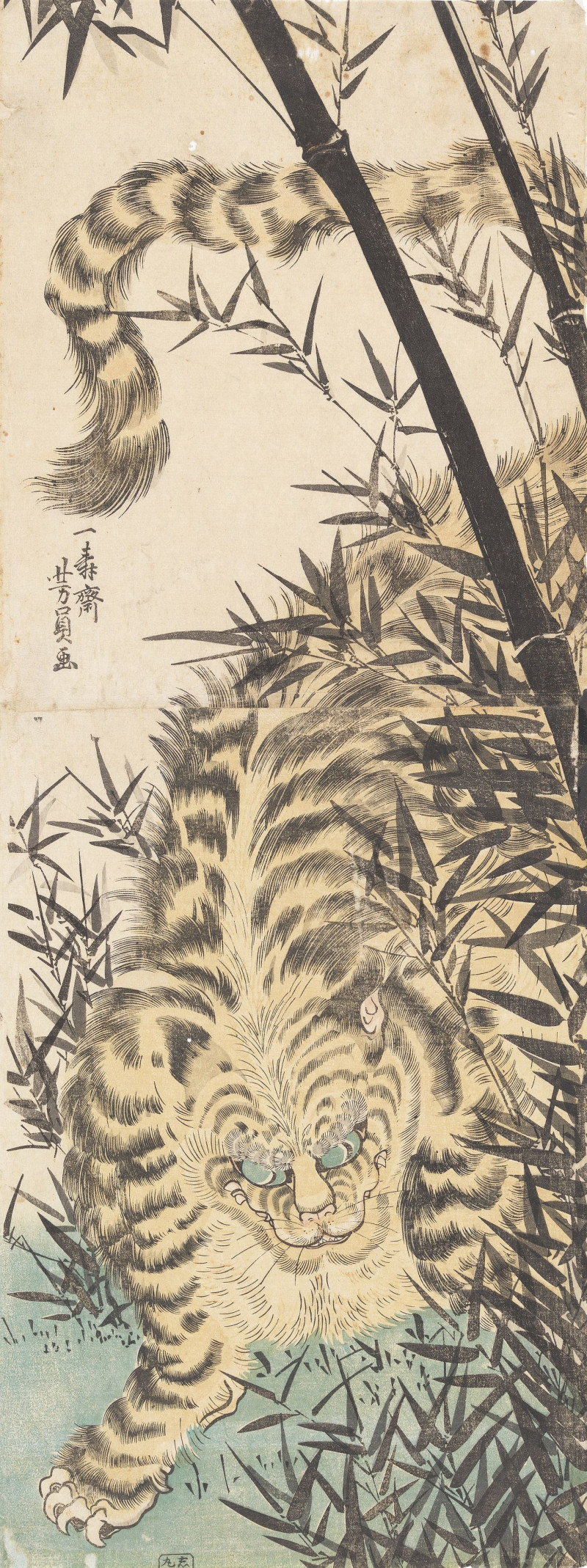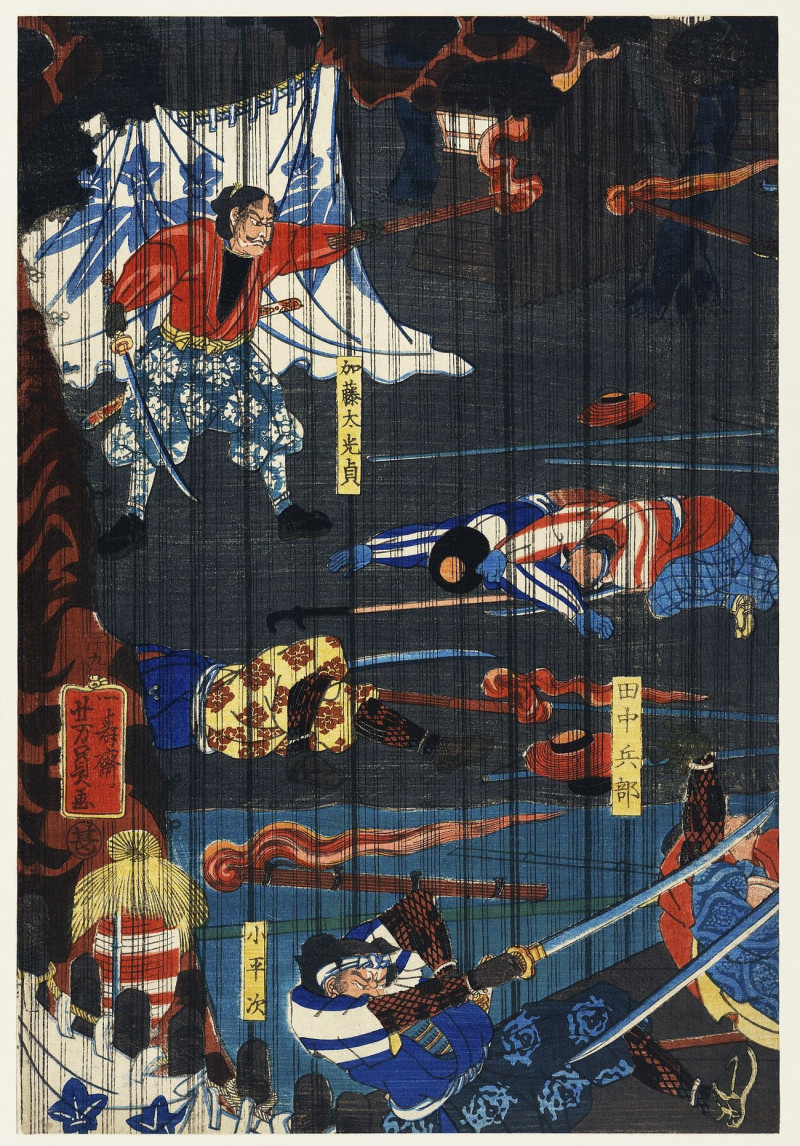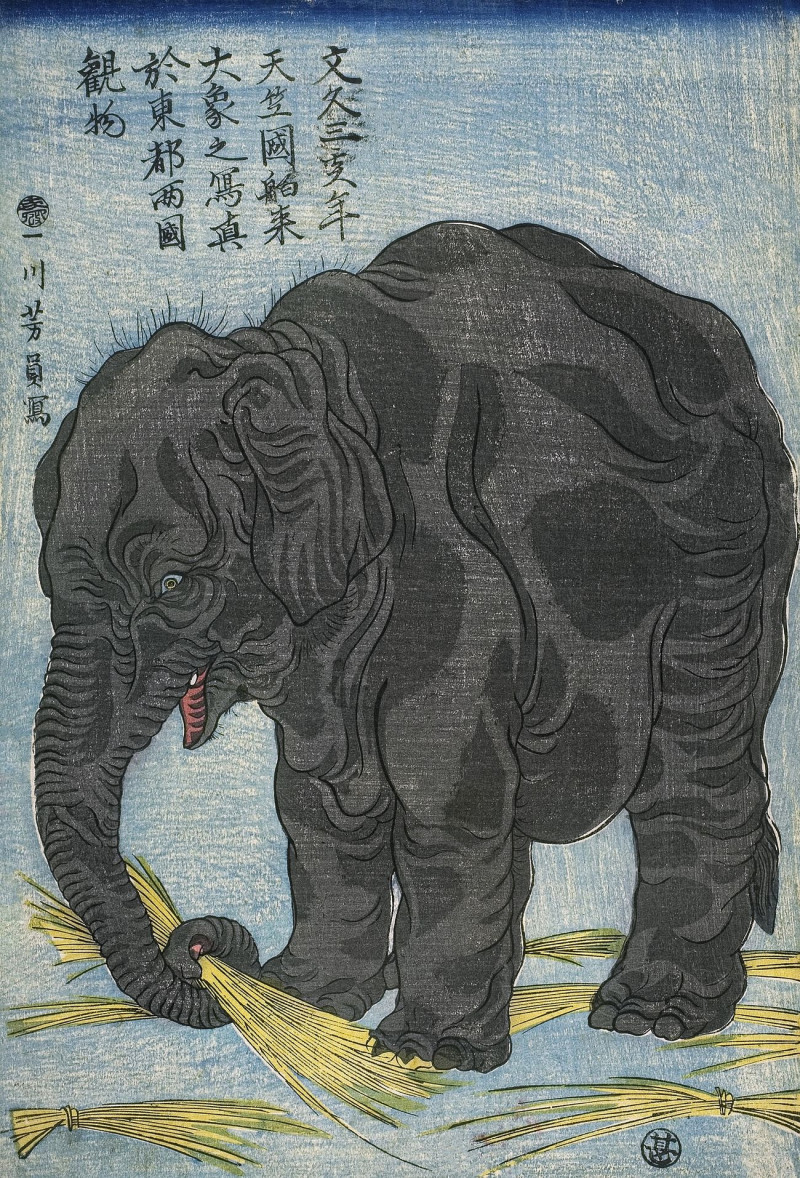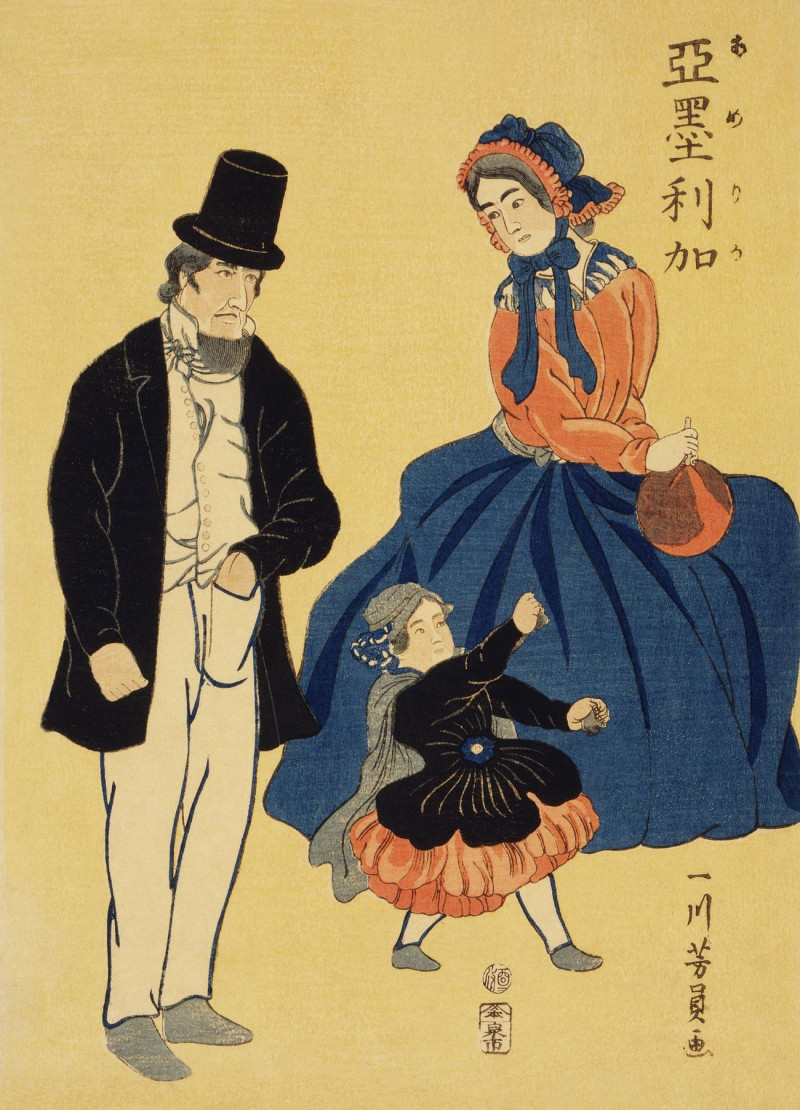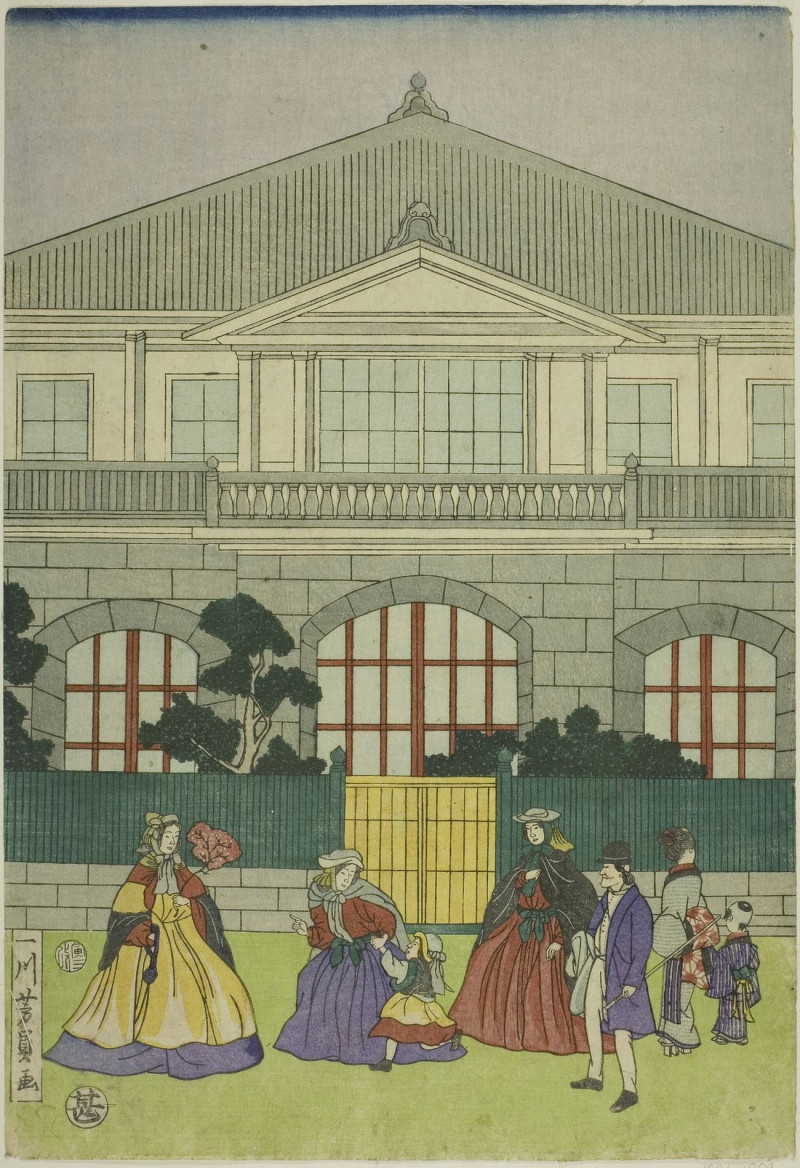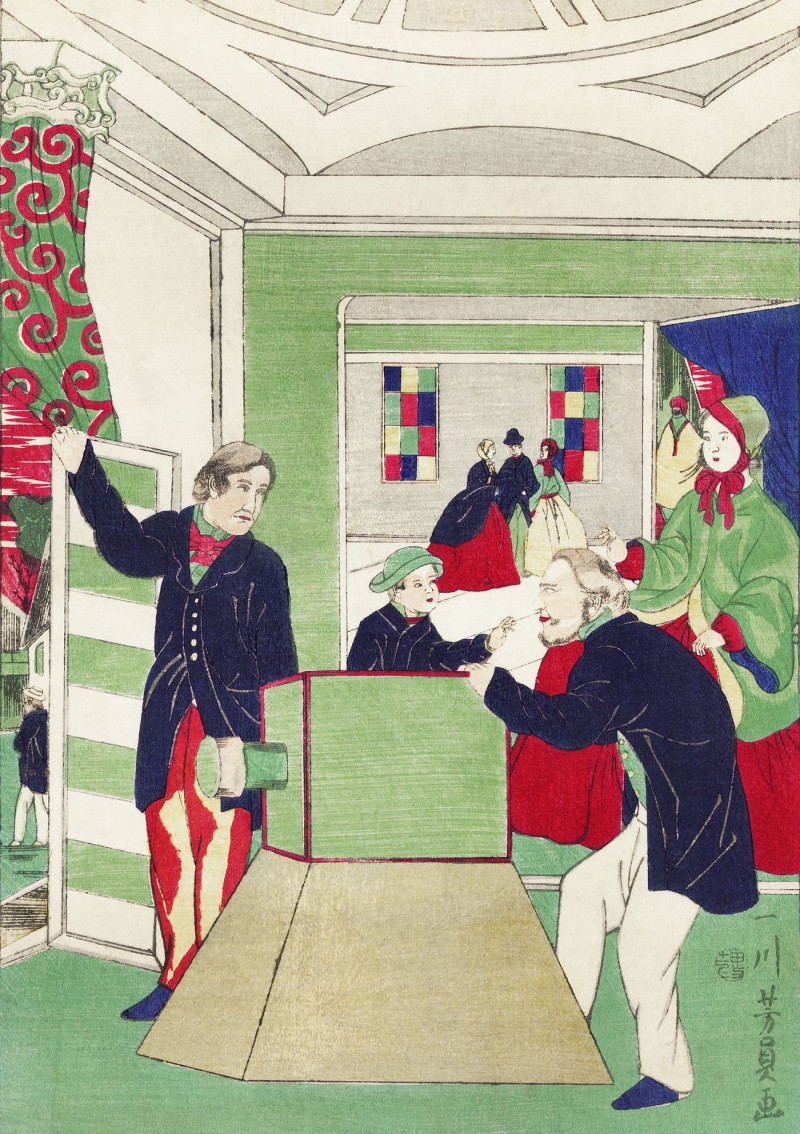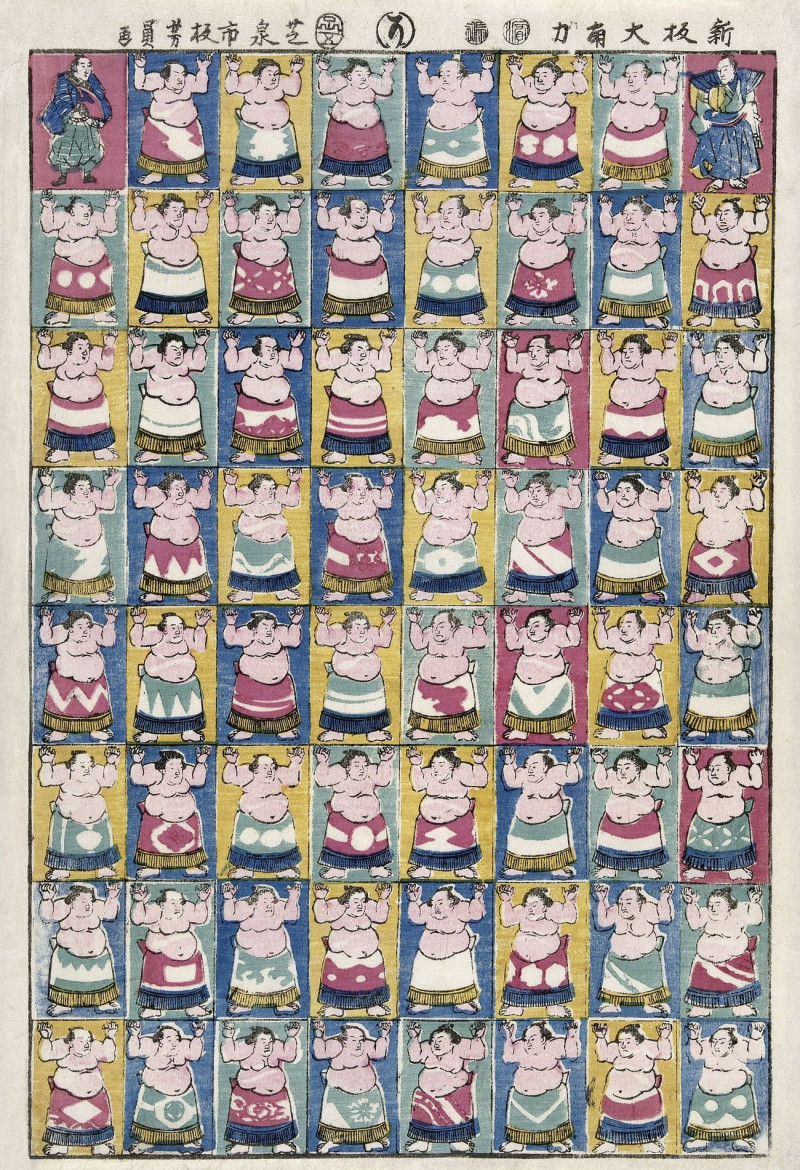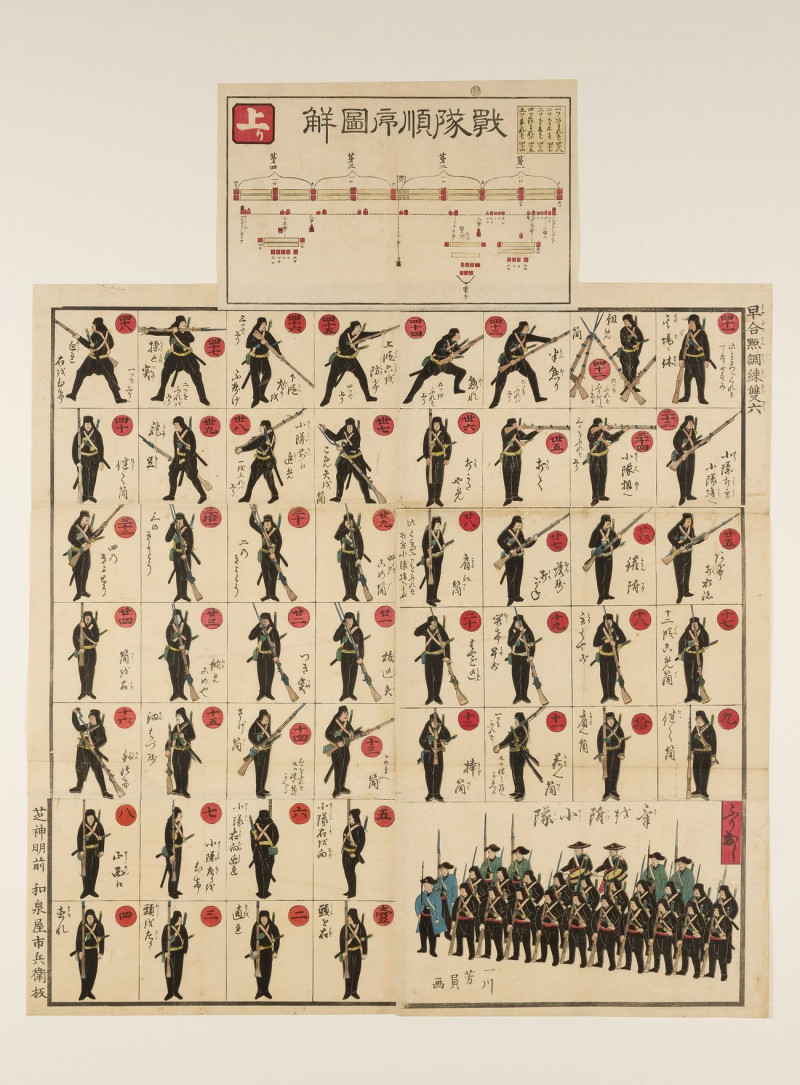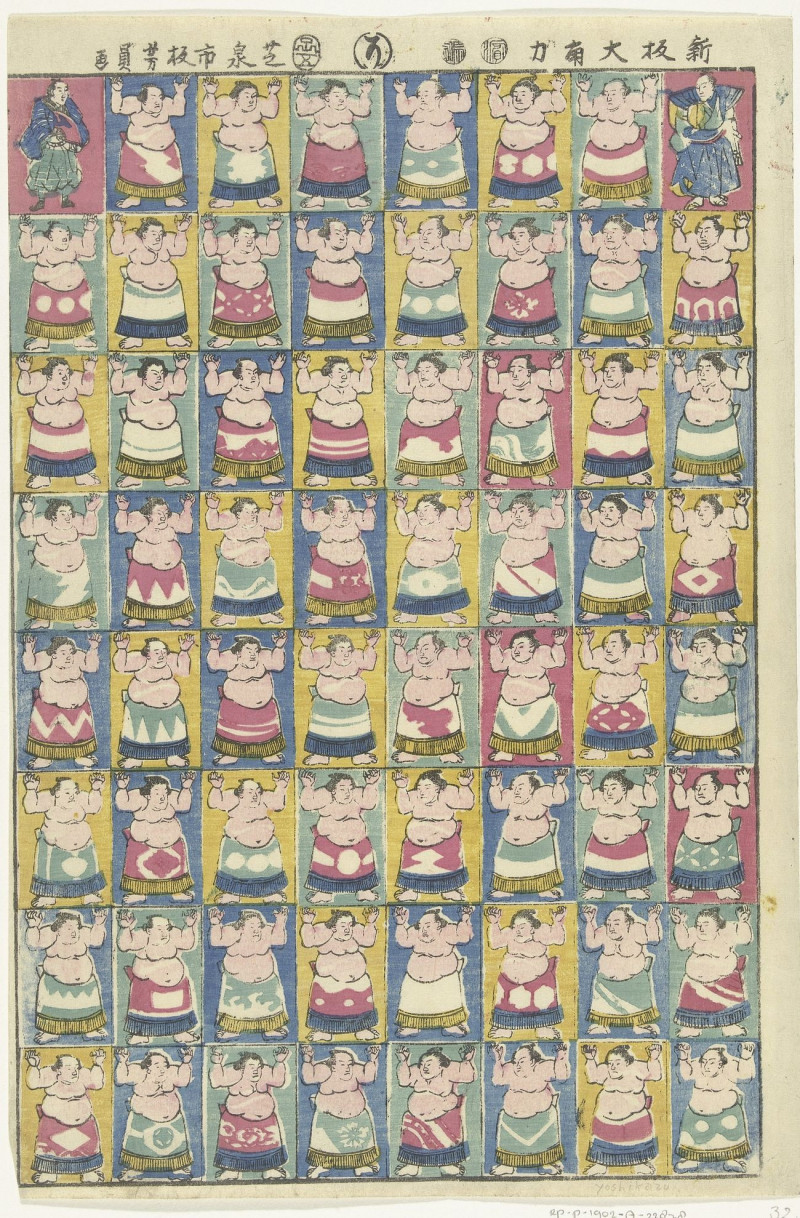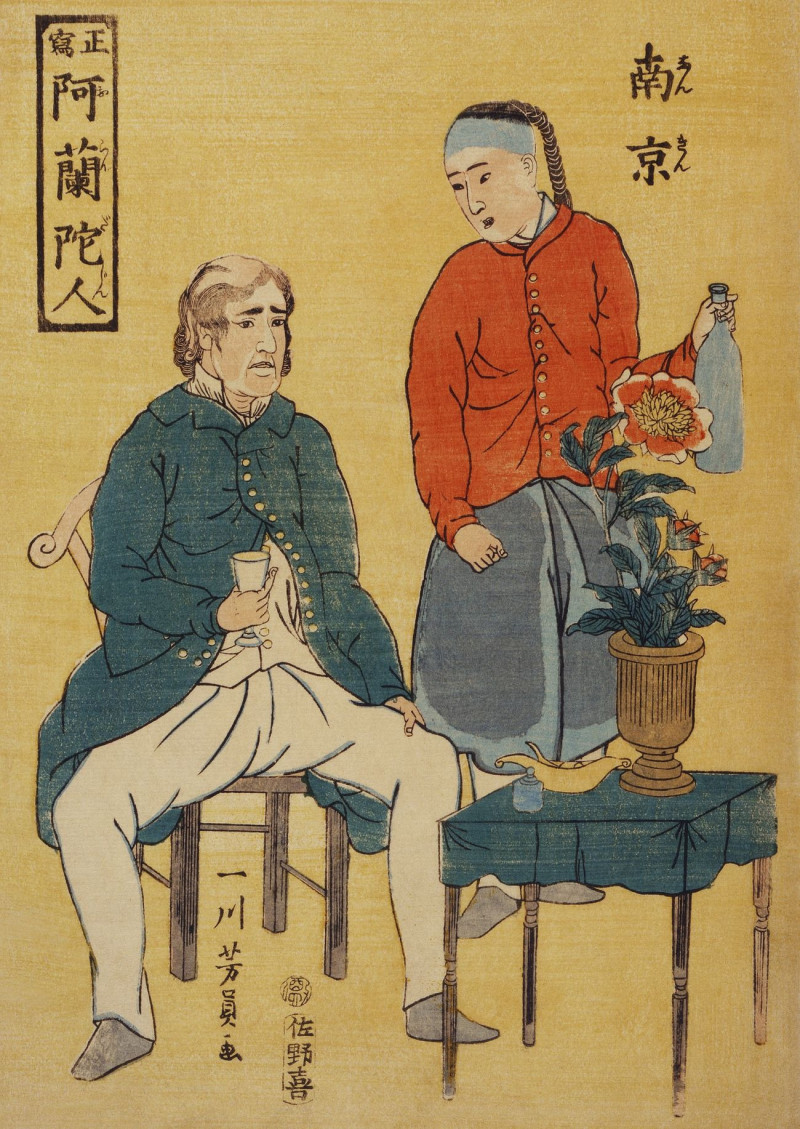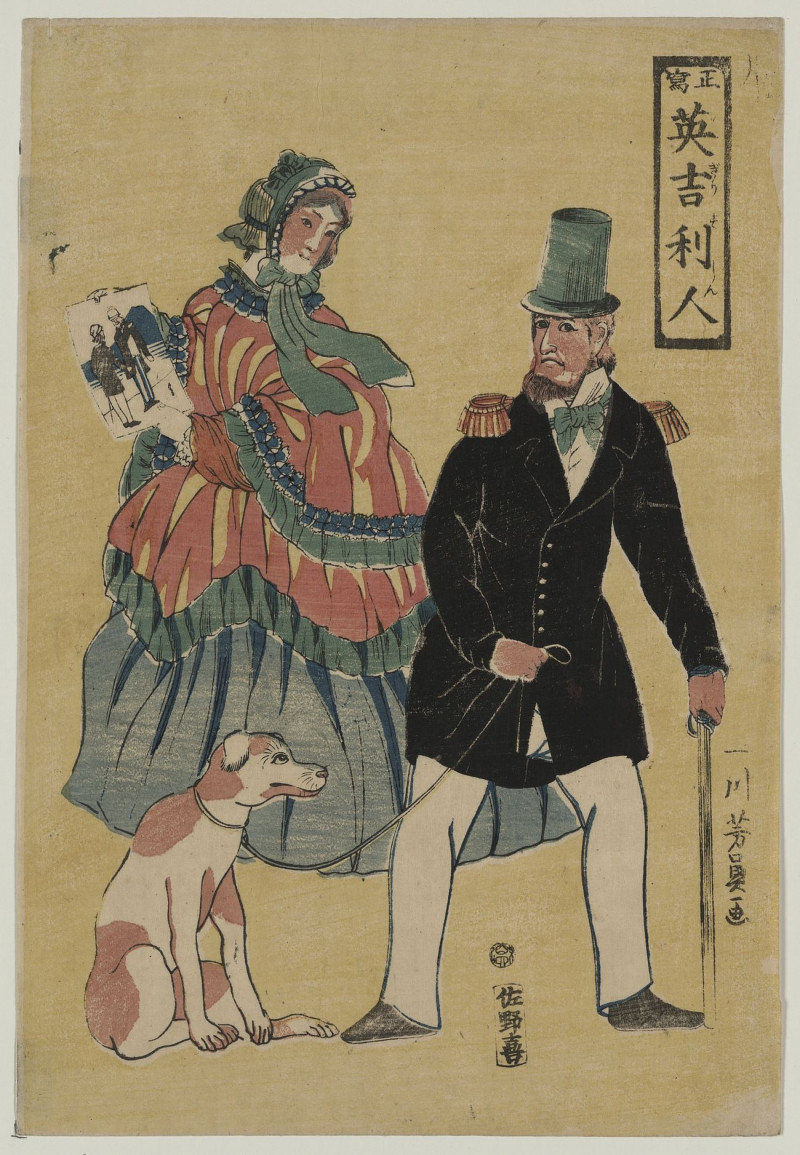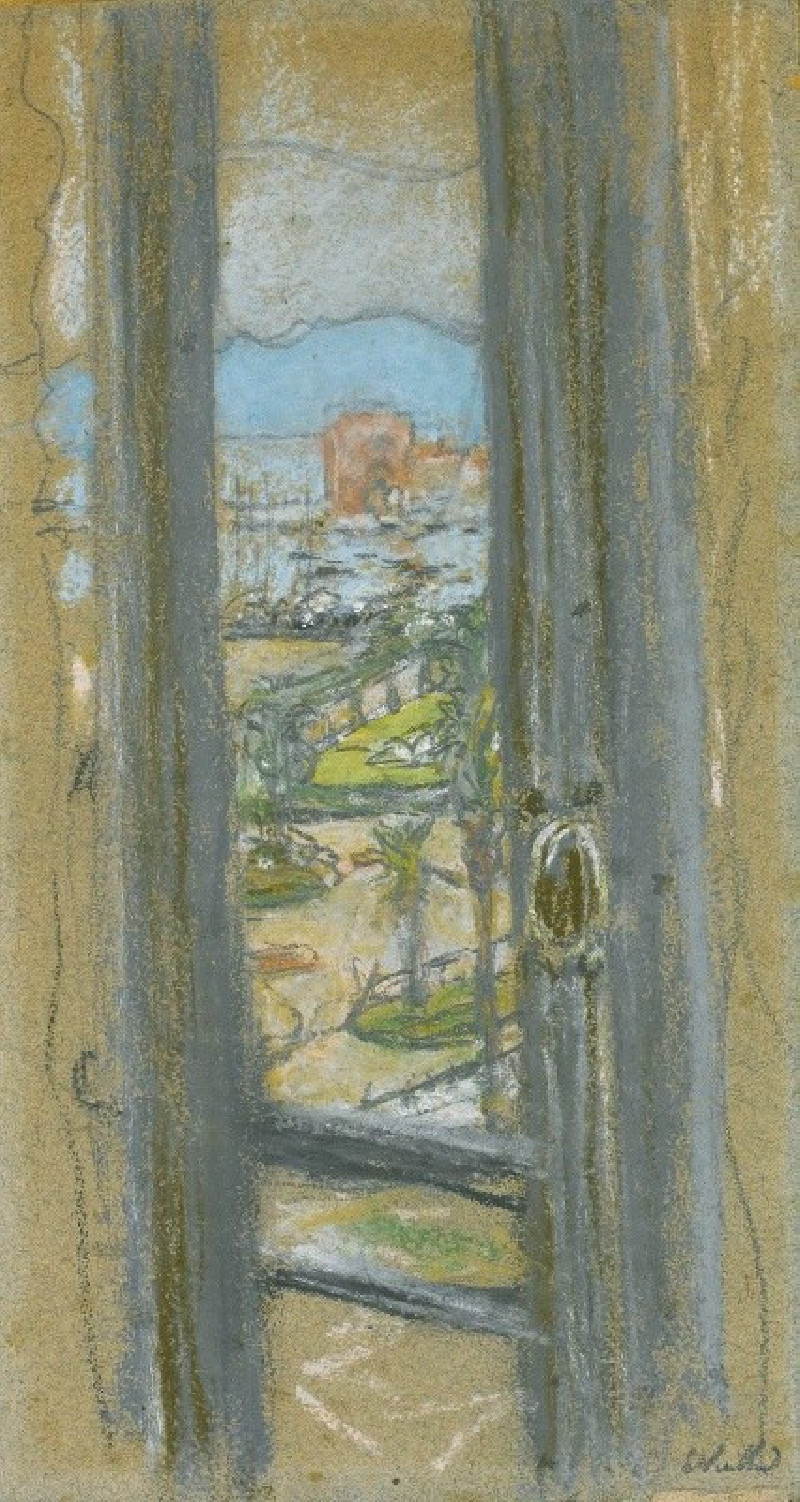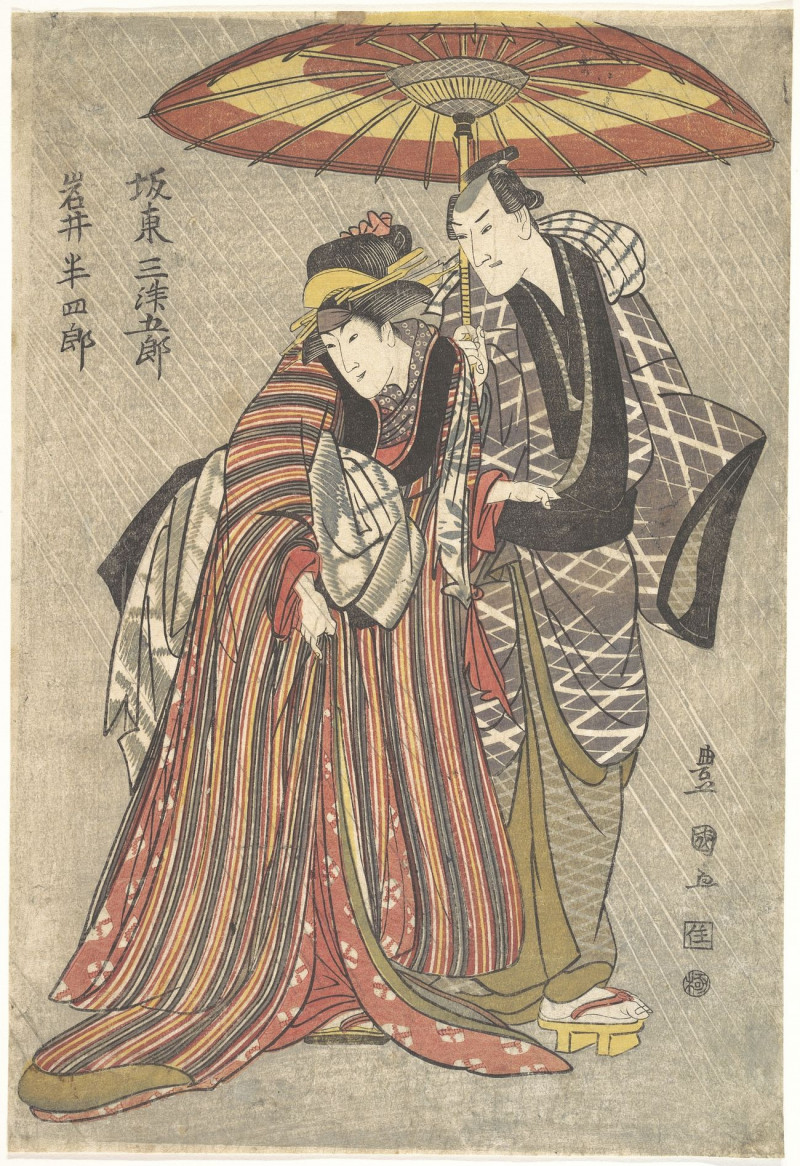Picture Of Large Elephant From India
Technique: Giclée quality print
Recommended by our customers
More about this artwork
This painting by Utagawa Yoshikazu captures a solitary and majestic Indian elephant portrayed in deep, rich hues of black and gray that contrast strikingly against a vibrant blue background. The elephant, occupying most of the composition, is intricately detailed, highlighting its textured skin, folds, and facial expressions. The artist has depicted the elephant handling some straw, which it grasps delicately with its trunk, demonstrating its gentle nature despite its large size.At the top of the painting, there is a block of Japanese text that contributes an element of traditional aesthetic and possibly contextualizes or gives insight about the artwork. The seals and calligraphy, common in Japanese art, indicate authenticity and ownership, as well as artistic or literary connections. The overall atmosphere of the painting is serene and dignified, reflecting perhaps a sense of reverence for the subject, which is a common theme in animals depicted by many artists of the ukiyo-e genre, to which Yoshikazu belongs.
Delivery
Reproductions are made to order and take 5 to 7 working days.
We send them out by courier and delivery takes another two working days.
If you need a reproduction sooner, please contact us - we can usually find a solution and produce it a little faster.
If you don't want to pay for postage, you can pick up your paintings at our galleries in Kaunas or Vilnius.
Returns
Yes, reproductions can be returned.
If you have any doubts more than 30 days after the date of purchase, please contact us - we will take the reproduction back for a refund or offer you a replacement!
We accept a maximum of two returns per customer - please note that we make reproductions to order, so please choose responsibly.
We do not refund shipping expenses.


